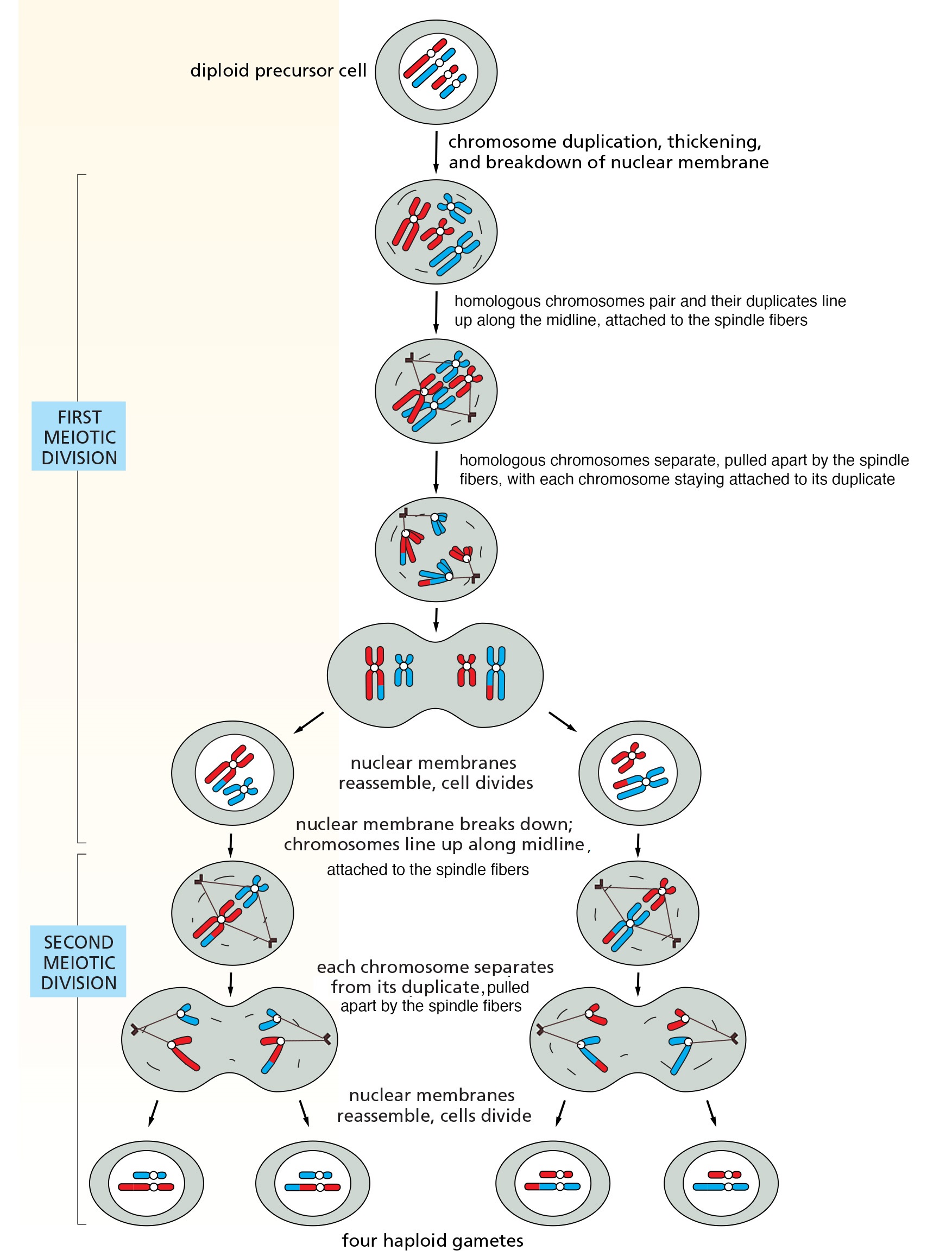Biological Concepts — Lab 2 online
MITOSIS and MEIOSIS
|
Instructions: Study all the visual information in this online lab, plus the accompanying explanations. Be prepared to answer a few "check-in" questions to show that you were paying attention. |
|
Mitosis is cell division (or, more properly, division of the nucleus of the cell)
in which the chromosome number is maintained.
Mitosis is most familiar in the diploid somatic cells of multicellular organisms, but it also occurs in haploid cells and in unicellular organisms. Mitosis can be broken down into four phases:
   
MITOSIS IN PLANT CELLS (onion root tip)  MITOSIS IN ANIMAL CELLS (whitefish blastula) 
|
MEIOSIS
Meiosis is a type of cell division that begins with a
single diploid cell and finishes with four haploid cells.
These haploid cells generally become gametes.

Overall scheme of meiosis

Meiosis involving one 'metacentric' chromosome pair (centromere centered between two arms of similar
length) and one 'telocentric' pair (centromere near one end, between long and short arms). Notice that
each resulting gamete has one chromosome of each type. Paternal chromosomes (from the father)
and maternal chromosomes (from the mother) are shown in different colors.

Details of the stages of meiosis.

Further details of meiosis I
· · · • • • • • · · ·
Click here for the
Check-In questions
—— Rev. Aug. 2020 ——